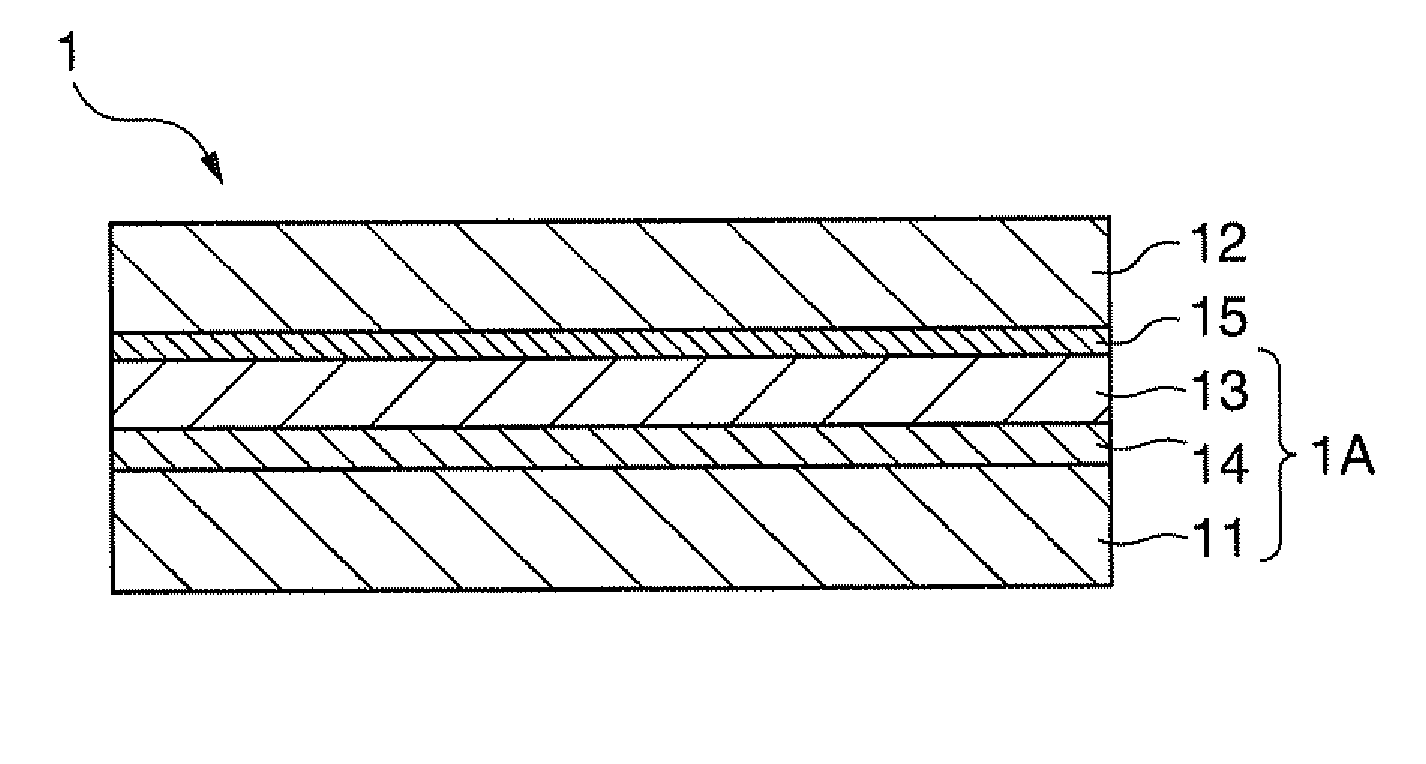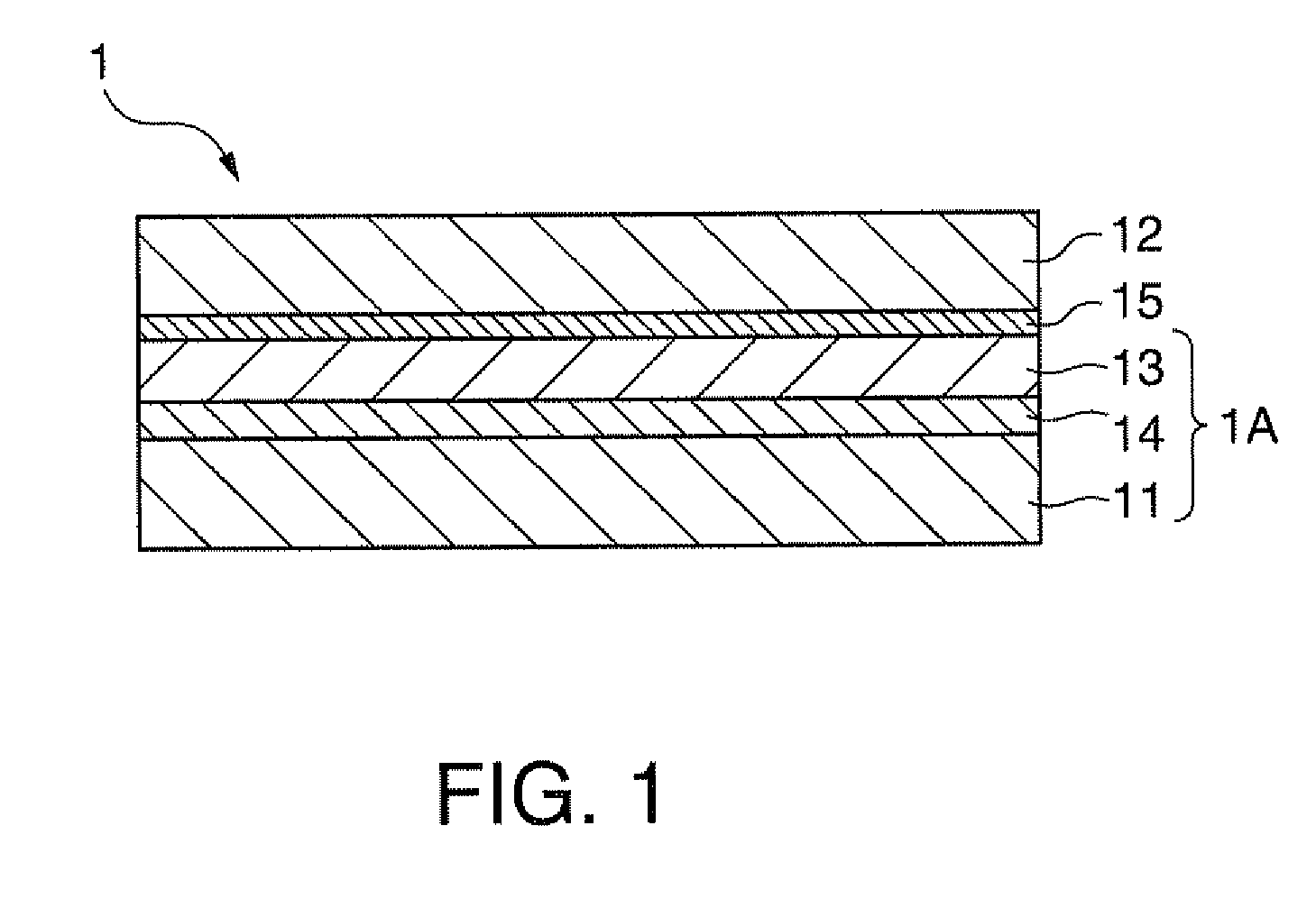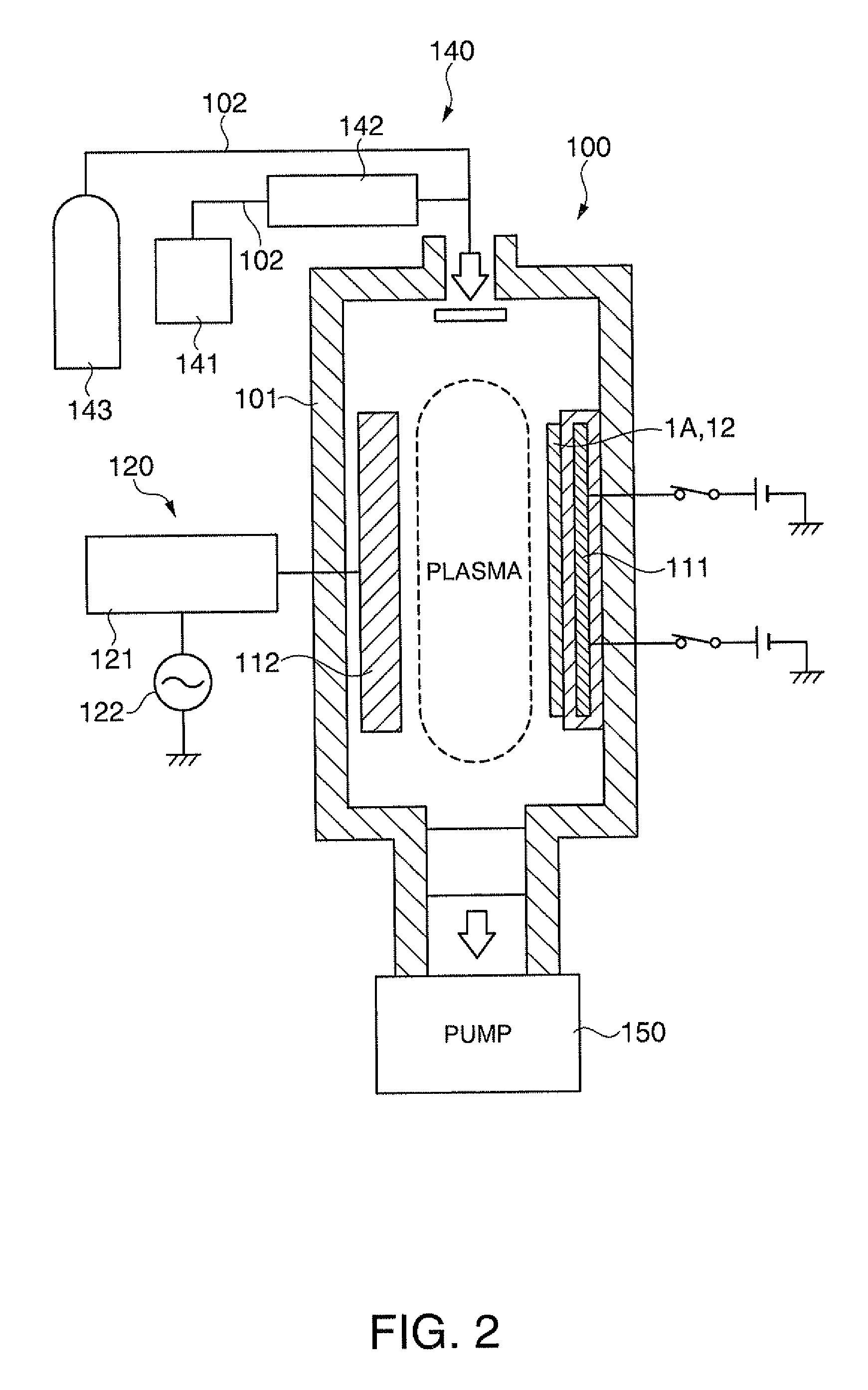Optical device, method for producing optical device, and projection-type imaging apparatus
- Summary
- Abstract
- Description
- Claims
- Application Information
AI Technical Summary
Benefits of technology
Problems solved by technology
Method used
Image
Examples
example 1
[0209]The substrate temperature during film formation was 65° C., the thickness of the second bonding film 15 formed of a plasma-polymerized film was 500 nm, the temperature during pressurization was 35° C., and the applied pressure was 30 MPa. The outer appearance of the optical device 1 produced under such conditions was favorable.
example 2
[0210]The substrate temperature during film formation was 85° C., the thickness of the second bonding film 15 was 500 nm, the temperature during pressurization was 35° C., and the applied pressure was 30 MPa. The outer appearance of the optical device 1 produced under such conditions was favorable.
example 3
[0214]The substrate temperature during film formation was 85° C., the thickness of the second bonding film 15 was 300 nm, the temperature during pressurization was 35° C., and the applied pressure was 30 MPa. The outer appearance of the optical device 1 produced under such conditions was favorable.
PUM
 Login to View More
Login to View More Abstract
Description
Claims
Application Information
 Login to View More
Login to View More - R&D
- Intellectual Property
- Life Sciences
- Materials
- Tech Scout
- Unparalleled Data Quality
- Higher Quality Content
- 60% Fewer Hallucinations
Browse by: Latest US Patents, China's latest patents, Technical Efficacy Thesaurus, Application Domain, Technology Topic, Popular Technical Reports.
© 2025 PatSnap. All rights reserved.Legal|Privacy policy|Modern Slavery Act Transparency Statement|Sitemap|About US| Contact US: help@patsnap.com



